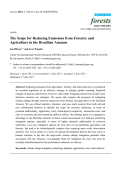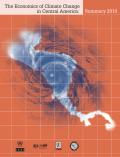This empirical paper focuses on the relationship between changes in GDP and CO2 emissions as a country's economy moves through periods of growth and decline. Using a comprehensive panel, the author documents substantial heterogeneity in the relationship across countries. Specifically, countries can be classified into one of the following groups: Group D (for decline) includes countries where the emissions growth rate is more strongly associated with the GDP growth rate in periods of GDP decline than in periods of GDP growth. Group G (for growth) includes countries where the degree of association is stronger in perods of GDP growth. Finally in Group D (for symmetrical) it is not possible to reject the hypothesis that the relationship is the same for growth and decline. According to a simple count criterion, approximately a third of the countries in the sample fall into each group. Notably China and the US, currently the world's largest emitters by a substantial margin, are in group D. These results have potentially important consequences for long-term emissions projections.

Reducing emissions from agriculture, forestry, and other land uses is considered an essential ingredient of an effective strategy to mitigate global warming. Required changes in land use and forestry, however, often imply foregoing returns from locally more attractive resource use strategies. In this paper, the authors assess and compare the prospects of mitigating climate change through emission reductions from forestry and agriculture in the Brazilian Amazon. They use official statistics, literature, and case study material from both old and new colonization frontiers to identify the scope for emission reductions, in terms of potential additionality, opportunity costs, technological complexity, transaction costs, and risks of economic and environmental spillover effects. Their findings point to a comparative advantage in the Brazilian Amazon of forest conservation-based over land-use modifying mitigation options, especially in terms of higher potential additionality in emission reductions. Low-cost mitigation options do exist also in use-modifying agriculture and forestry, but tend to be technologically complex thus requiring more costly interventionschemes.
The marginality concept calls for the integration of poverty concepts with those of social exclusion, geography, and ecology. The difficulties in reaching people at the margins of systems are explained by a set of distances, (i.e., physical distances such as being located in remote or harsh environments), social distances (being excluded, discriminated against, or not having rights or access to services or opportunities), but may also be related to technological and institutional infrastructure deficiencies. A review of policies intended to reduce marginality suggests that none of the marginality determinants need to be accepted as long term. Coherent policies and actions, however, need to match the systemic causality of marginality in order to be effective.

